Case 09 The Scorpion Robot
Introduction
Scorpions are striking arthropods that belong to a family of arachnids. They live in all corners of the earth, including desert, forest and grassland environments. Scorpions usually have a long body and a pair of curved tails, often with a venomous stinger at the end. Their physical appearance shows a variety of colours and patterns, ranging from light yellow to dark brown or black.
Scorpions feed on insects, arachnids and other small invertebrates. They have a well-developed sensory system, especially their antennae and eyes, which help them locate and capture prey in the dark. The scorpion's venomous stinger contains toxins and is generally used for defence and to capture food.
We'll be making a scorpion today with the Nezha Inventor's Kit V2.
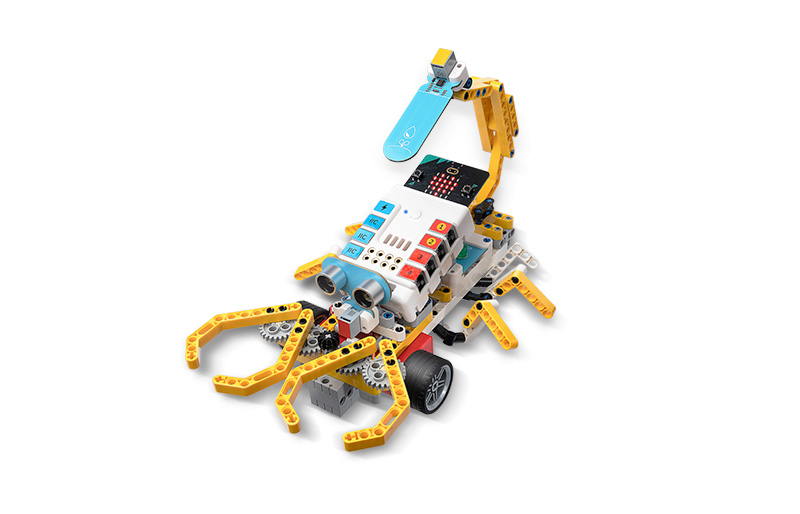
Teaching Objectives
- Understand the basic components and functions of the Nezha Inventor's Kit V2.
- Understand how ultrasonic sound sensors and soil moisture sensors work.
- Learn how to program the robot to control its behaviour so that it can make appropriate movements based on feedback from the sensors.
- Develop creativity, problem solving skills and teamwork ability.
Teaching Preparation
Teaching Process
Introduce
Introduce students to the background and objectives of the scorpion robot production to stimulate their interest and curiosity.
Is everyone interested in robots and sensors? Today, I have brought a special robot that can move like a scorpion and has ultrasonic sensors and soil moisture sensors. It can sense obstacles in front of it and will react when it detects people touching the soil moisture sensor. Let's discover how to make this amazing scorpion robot!
Exploration
Group discussion to get students thinking about how to make a scorpion from block materials, focusing on the design of the scorpion's exterior shape and how the ultrasonic sensor and soil moisture sensor work.
- How does the scorpion robot sense obstacles in front of it? How does it do this using ultrasonic sensors?
- How does the soil moisture sensor work? How does it relate to the behaviour of the scorpion robot?
- How is the scorpion robot programmed to act accordingly to the feedback from the sensors?
- How are the LEDs used to indicate the status of the scorpion robot?
Practice
Work in groups to create a scorpion from block materials according to your own design scheme.
Create a scorpion from block materials according to your own design.
Examples
Assembly Steps



















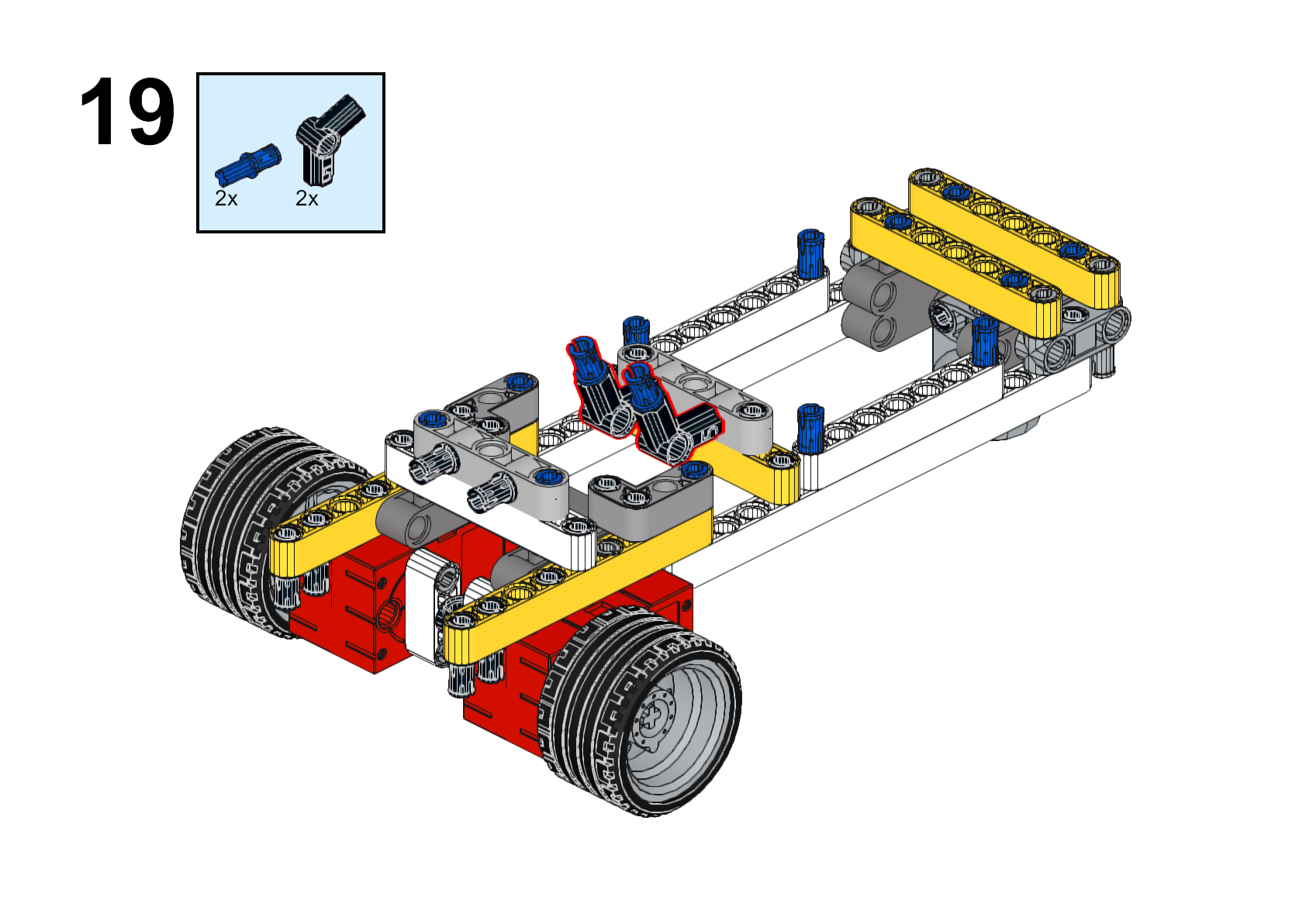












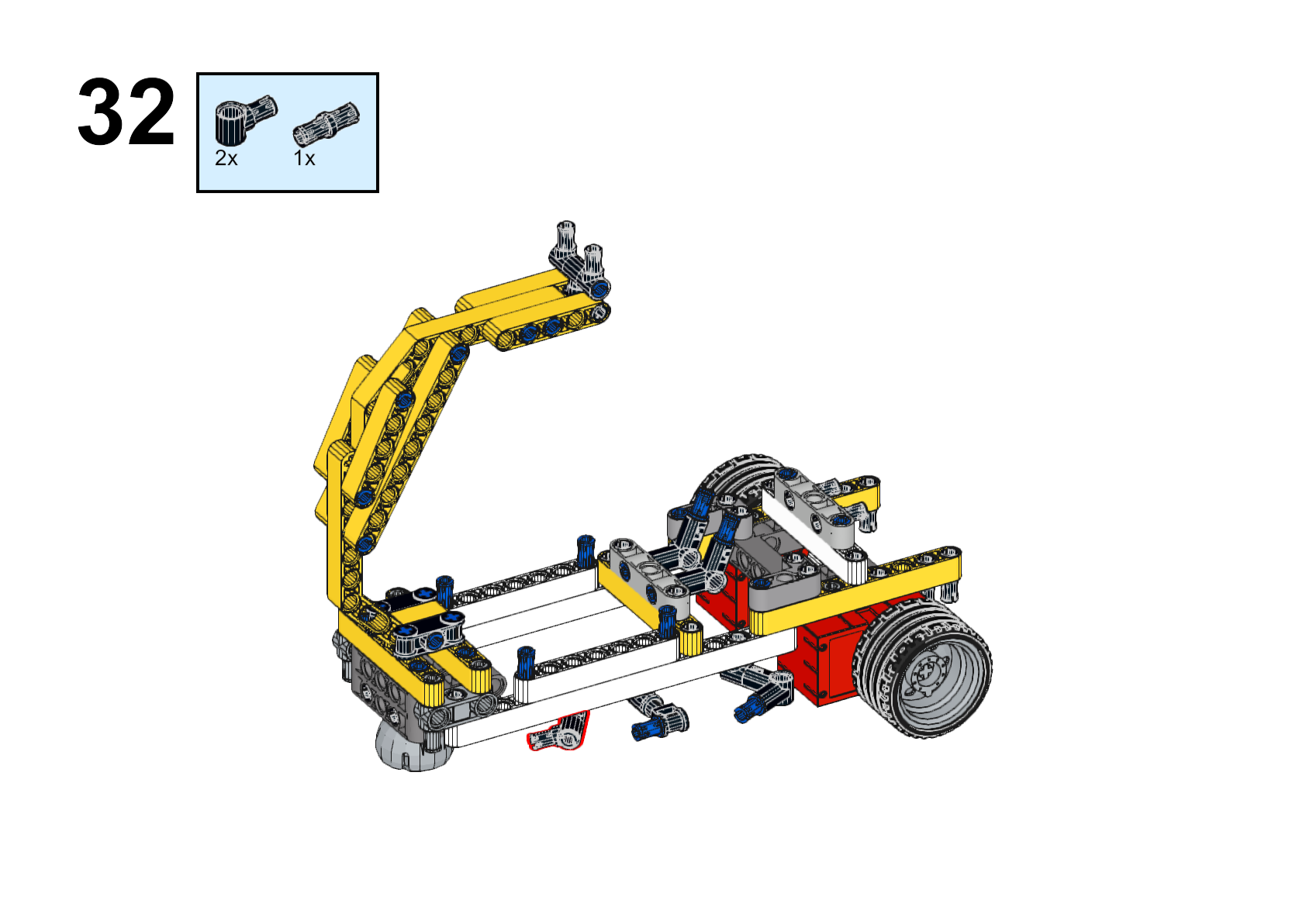














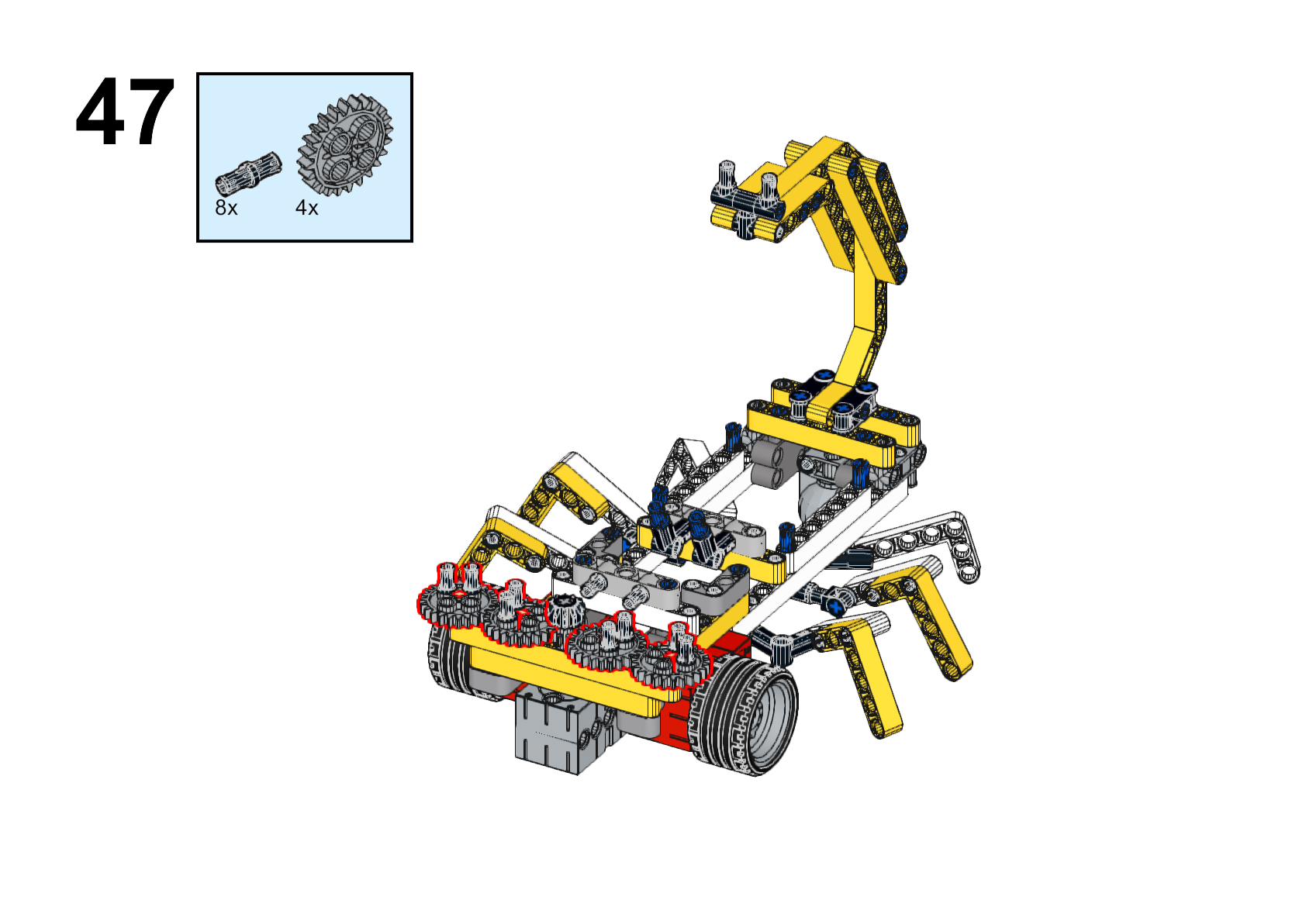
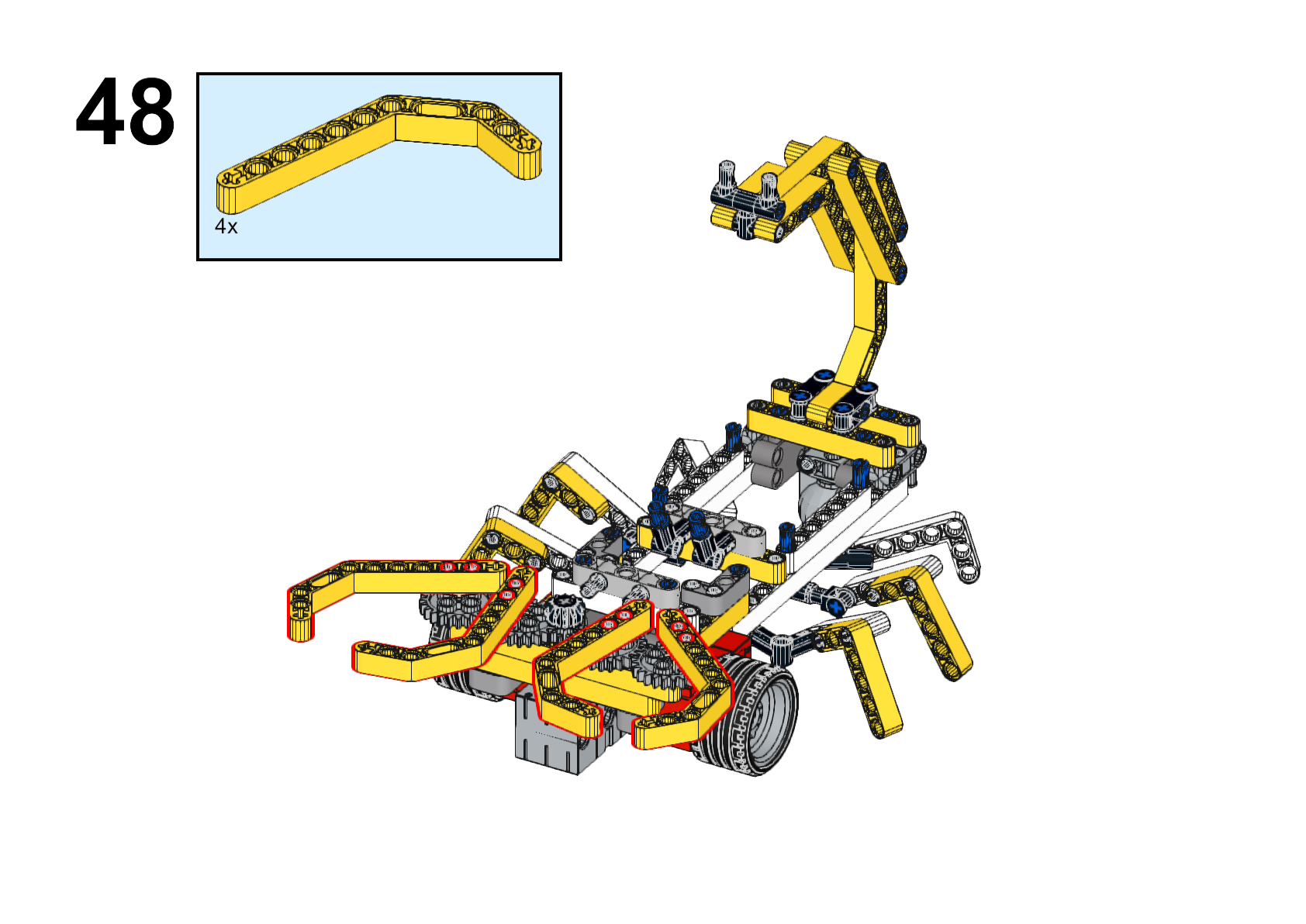




Completed

Hardware Connection
The ultrasonic sensor is connected to J1, the soil moisture sensor is connected to J2, the red LED is connected to J3, the green LED is connected to J4, the motors are connected to M1 and M2 and the servo is connected to S1 of the Nezha expansion board.

Programming
Go to makecode
Create new projects
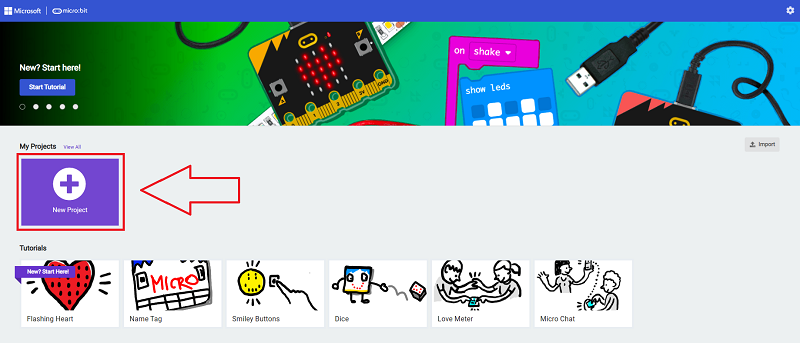
Click extensions
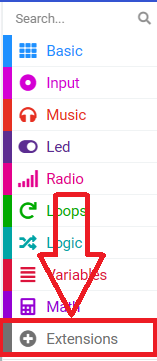
Search with planetX to download the package.
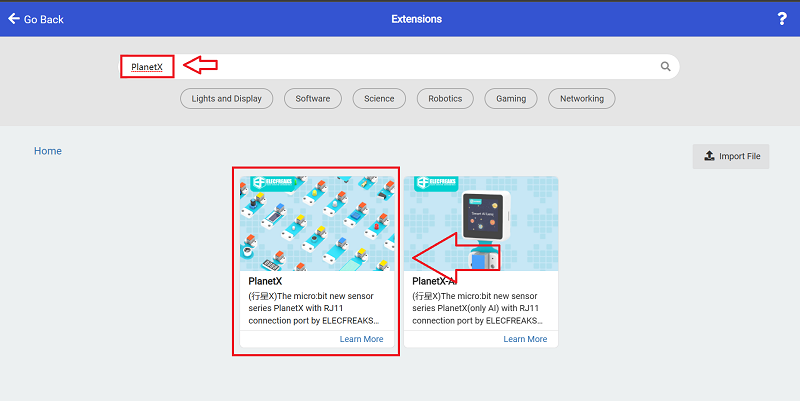
Search with nezha to download the package.
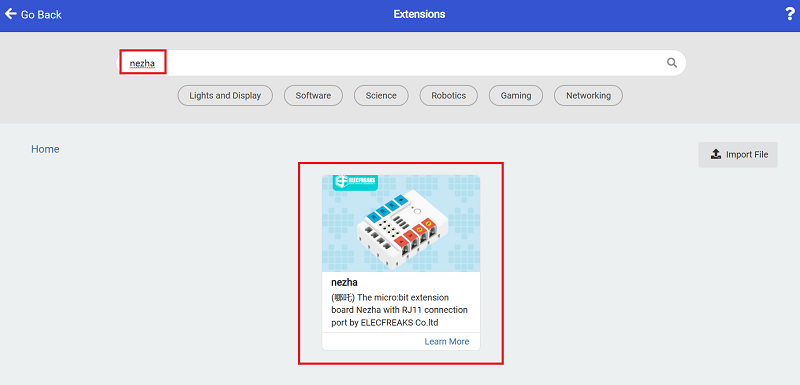
Code

Link: https://makecode.microbit.org/_6YoKJe6bvWJp
You may download it directly below:
Demonstration
Present in groups and compare the results and effectiveness of each group.
Result
When the scorpion's tail is touched, the scorpion travels forward and when an obstacle is detected ahead it stops and begins to clip.

Reflection
Share in groups so that students in each group can share their production process and insights, summarise the problems and solutions they encountered, and evaluate their strengths and weaknesses.